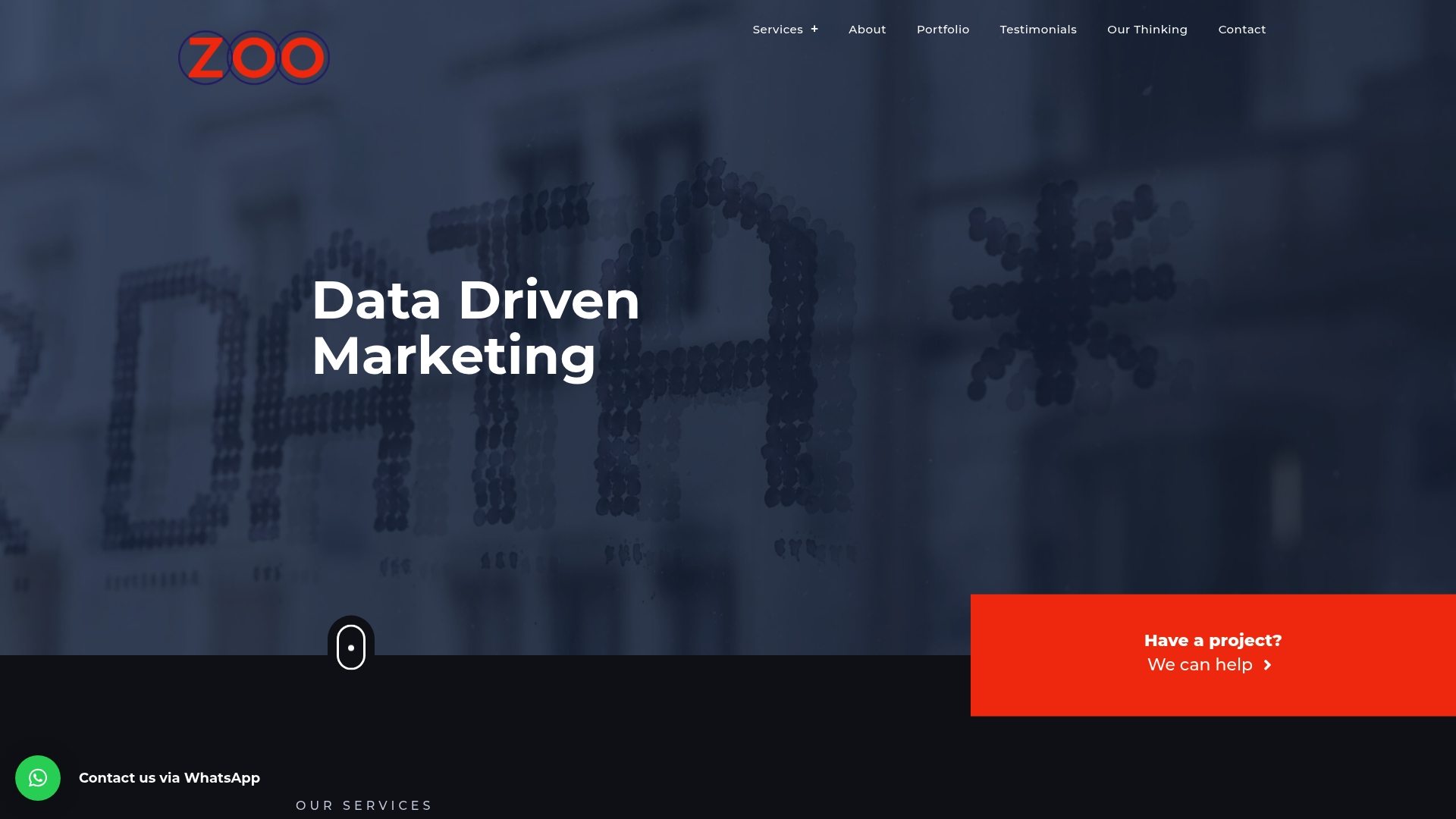Small businesses are finding themselves glued to their screens more than ever, juggling constant notifications and digital tools just to keep up. But while it feels like staying online all the time is the only way to survive, that could actually be harming your team. Research shows that businesses who regularly review their digital habits are 65 percent more likely to stay on top of tech changes and remain competitive. Still, the real breakthrough isn’t about spending more hours online, it’s about creating healthier boundaries and smarter digital routines that make your business more resilient and your team less stressed.
Table of Contents
- Understand The Importance Of Digital Wellbeing
- Set Clear Boundaries For Screen Time
- Use Digital Tools To Foster Work-Life Balance
- Prioritize Mental Health In The Digital Environment
- Leverage Productivity Apps For Efficiency
- Create A Positive Online Culture For Your Team
- Regularly Assess Your Digital Habits
Quick Summary
| Takeaway | Explanation |
|---|---|
| Prioritise Digital Wellbeing | Establish a healthy relationship with technology to boost productivity without harming mental health. |
| Set Strategic Screen Time Boundaries | Develop protocols that encourage intentional technology use to enhance focus and reduce burnout. |
| Implement Digital Tools for Work-Life Balance | Use technology to create flexible work environments that support employee well-being. |
| Focus on Mental Health Strategies | Integrate regular mental health support and discussions to combat digital stress within your team. |
| Regularly Assess Digital Habits | Conduct ongoing evaluations of digital interactions to identify areas for improvement and promote efficiency. |
1: Understand the Importance of Digital Wellbeing
Digital wellbeing represents a critical strategy for small businesses navigating the complex online ecosystem. At its core, digital wellbeing focuses on maintaining a healthy and sustainable relationship with digital technologies, ensuring that technological tools enhance productivity without compromising mental health or organisational efficiency.
Small businesses face unique challenges in the digital landscape. The constant connectivity and information overload can lead to significant stress and potential burnout. Exploring digital marketing strategies requires a balanced approach that protects both individual and collective digital wellness.
Research from the National Institute of Mental Health reveals that excessive digital engagement can significantly impact psychological well-being. Small business owners must recognise the potential risks associated with continuous digital interaction:
Increased stress levels from constant notifications
Reduced concentration and productivity
Higher risk of digital fatigue and burnout
Addressing digital wellbeing means creating intentional boundaries and implementing strategic practices that promote a healthier digital work environment. This involves understanding how digital technologies interact with human psychology and developing systems that support mental resilience.
Key considerations for small businesses include establishing clear communication protocols, setting realistic digital boundaries, and fostering a workplace culture that values mental health and technological balance. Proactive digital wellbeing strategies can transform how your business approaches technology, turning potential stressors into opportunities for growth and innovation.
2: Set Clear Boundaries for Screen Time
Screen time management is a fundamental aspect of digital wellbeing for small businesses. Unlike personal digital habits, professional screen time requires strategic planning to maintain productivity and prevent potential burnout. Our digital marketing terms guide highlights the importance of understanding technological engagement beyond mere usage.
Establishing clear screen time boundaries is not about restricting technology, but optimising how your team interacts with digital tools. According to Stanford University’s Digital Wellness Research, structured digital interactions can significantly improve workplace performance and mental health.
Small businesses should develop comprehensive screen time protocols that address various workplace scenarios. These protocols need to be flexible yet structured, recognising that different roles may require different digital engagement levels.
Key strategies for implementing effective screen time boundaries include:
Creating designated “no screen” periods during workdays
Establishing clear communication expectations for digital messaging
Implementing technology-free zones in workplace environments
Practical implementation requires more than just rules. Business leaders must model appropriate digital behavior, demonstrating that screen time management is a collective organisational commitment. This means leaders should also adhere to the same screen time boundaries they expect from their teams.
Technology tracking tools can provide valuable insights into digital consumption patterns. By understanding how time is spent across various digital platforms, businesses can make informed decisions about optimising workflow and reducing unnecessary digital interactions.
Remember that screen time boundaries are not about complete digital avoidance, but about creating a balanced, intentional approach to technological engagement that supports both individual well-being and organisational productivity.
3: Use Digital Tools to Foster Work-Life Balance
Digital tools are no longer just productivity instruments but essential components in creating sustainable work-life boundaries for small businesses. Exploring digital marketing strategies reveals the transformative potential of strategic technological integration.
Research from the Work-Life Balance Institute demonstrates that purposeful digital tool selection can dramatically improve employee wellbeing and organisational efficiency. Smart technology deployment goes beyond mere task management – it represents a holistic approach to supporting team mental health and professional effectiveness.
Modern digital tools offer unprecedented opportunities for creating flexible, adaptive work environments. These technologies enable businesses to reimagine traditional workplace structures, promoting autonomy while maintaining collaborative connections.
Critical digital tools for fostering work-life balance include:
Time tracking applications with built-in break reminders
Communication platforms with customisable notification settings
Project management software with clear boundary delineations
Implementing these tools requires a strategic, thoughtful approach. Small businesses must select technologies that align with their specific organisational culture and individual team member needs. This means moving beyond one-size-fits-all solutions and embracing personalised digital ecosystems.
Successful work-life balance tools should provide transparency without creating additional stress. They must offer insights into productivity and workload distribution while respecting individual privacy and autonomy.
The goal is not to monitor employees rigidly but to create supportive digital environments that encourage healthy work practices. By leveraging intelligent digital tools, small businesses can develop more resilient, adaptable, and mentally healthy workplaces that thrive in an increasingly complex digital landscape.
4: Prioritize Mental Health in the Digital Environment
Mental health in digital workspaces has become a critical consideration for small businesses. Our digital marketing guide recognises the intricate relationship between technological engagement and psychological well-being.
Digital environments can significantly impact psychological health, with constant connectivity creating unique stressors. According to World Health Organization research, prolonged digital exposure without proper mental health strategies can lead to increased anxiety, decreased productivity, and potential burnout.
Small businesses must develop comprehensive approaches that acknowledge the psychological challenges inherent in digital work environments. This means moving beyond traditional workplace wellness models and embracing more holistic, technology-aware mental health strategies.
Key mental health priorities in digital environments include:
Regular psychological support and counselling resources
Structured digital detox periods
Training on recognising digital stress symptoms
Proactive mental health support requires more than reactive interventions. Businesses need to create cultures that normalise discussions about digital stress, providing safe spaces for employees to express technological overwhelm without fear of professional repercussions.
Technology itself can be leveraged as a supportive tool for mental wellness. Digital platforms offering meditation resources, stress tracking, and psychological support can be integrated into workplace wellness programs. These tools help employees develop resilience and self-awareness in increasingly complex digital landscapes.
Ultimately, prioritising mental health in digital environments is about creating adaptive, compassionate workspaces that recognise technology as a tool for human empowerment, not a source of constant psychological pressure. Small businesses that embrace this perspective will develop more resilient, engaged, and productive teams.
5: Leverage Productivity Apps for Efficiency
Productivity applications represent powerful tools for small businesses seeking to optimise digital workflows. Our digital marketing terms guide emphasises the critical role of strategic technological integration in modern business environments.
Research from Harvard Business Review indicates that strategic app selection can increase workplace efficiency by up to 40%. Selecting the right productivity applications is not about accumulating tools, but creating a streamlined technological ecosystem.
Small businesses must approach productivity app implementation with a deliberate, systematic strategy. This means evaluating applications not just for their individual features, but for their capacity to integrate seamlessly with existing workflows and team dynamics.
Critical considerations when selecting productivity applications include:
Compatibility with existing business software
User-friendly interface and minimal learning curve
Strong data security and privacy protections
Effective productivity apps go beyond simple task management. They should provide comprehensive solutions that support collaboration, reduce administrative overhead, and create transparent communication channels. The goal is to eliminate technological friction and enable teams to focus on high-value strategic work.
Successful implementation requires ongoing evaluation and adaptation. Businesses should regularly assess their technological tools, gathering feedback from team members and remaining open to adjusting their digital toolkit as organisational needs evolve.
By thoughtfully leveraging productivity applications, small businesses can transform digital complexity into a strategic advantage. These tools offer unprecedented opportunities to streamline processes, enhance communication, and create more agile, responsive organisational structures that can quickly adapt to changing business landscapes.
6: Create a Positive Online Culture for Your Team
Building a positive online culture requires intentional strategy and continuous effort. Our digital marketing guide recognises that team dynamics in digital environments demand thoughtful, proactive management.
According to MIT Sloan Management Research, organisations with strong digital cultures experience 3.8 times higher employee engagement and significantly improved performance outcomes. Digital culture is not about technology, but about human connection through technological platforms.
Small businesses must create online environments that foster trust, transparency, and genuine collaboration. This means moving beyond transactional digital interactions and developing meaningful virtual relationships that support team members’ professional and personal growth.
Key elements for developing a positive online culture include:
Establishing clear digital communication guidelines
Promoting respectful and inclusive online interactions
Recognising and celebrating digital team achievements
Successful online cultures require leadership that models positive digital behaviors. Team leaders must demonstrate empathy, active listening, and genuine engagement in digital spaces. This means being present, responsive, and creating opportunities for authentic digital connections.
Virtual team-building activities, regular check-ins, and platforms that encourage informal digital interactions can help break down communication barriers. These strategies transform digital workspaces from purely functional environments into vibrant, supportive communities.
Ultimately, creating a positive online culture is about humanising digital interactions. Small businesses that prioritise emotional intelligence, mutual respect, and inclusive digital practices will develop more resilient, motivated, and connected teams that can thrive in increasingly complex digital landscapes.
7: Regularly Assess Your Digital Habits
Constant technological evolution demands ongoing digital habit assessment for small businesses. Our digital marketing strategies guide emphasises the critical importance of adaptive digital practices.
Research from Deloitte Digital Workplace Trends indicates that businesses which conduct regular digital habit reviews are 65% more likely to maintain competitive technological effectiveness. Digital habit assessment is not a one-time event, but a continuous process of reflection and adaptation.
Small businesses must develop systematic approaches to evaluating their digital interactions, technologies, and workplace strategies. This involves creating structured mechanisms for gathering feedback, tracking technological usage, and identifying potential areas of improvement.
Critical components of digital habit assessment include:
Quarterly technological usage reviews
Anonymous employee digital wellness surveys
Performance metrics tracking digital interaction efficiency
Effective digital habit assessment requires honest, non-punitive evaluation. The goal is not to criticise individual behaviors but to understand collective digital ecosystem dynamics and create supportive improvement strategies.
Technological tracking tools can provide objective insights into digital consumption patterns. These tools help businesses understand how time is spent across various digital platforms, revealing potential inefficiencies and opportunities for optimisation.
By developing a culture of continuous digital habit assessment, small businesses can create more responsive, adaptive technological environments. This approach ensures that digital tools remain strategic assets rather than becoming productivity barriers, ultimately supporting team well-being and organisational effectiveness.
Below is a comprehensive summarisation table offering an at-a-glance overview of the article’s seven essential digital wellbeing tips for small businesses, including key actions, benefits, and focus areas.
| Tip | Key Actions/Focus | Benefit for Small Businesses |
|---|---|---|
| Understand Digital Wellbeing | Recognise tech-health balance, set protocols | Boosts productivity while minimising digital stress |
| Set Clear Boundaries for Screen Time | Create ‘no screen’ periods, track usage | Reduces burnout, improves focus |
| Use Digital Tools for Work-Life Balance | Apply project/time management apps, customise notifications | Supports staff wellbeing, increases flexibility |
| Prioritise Mental Health Digitally | Provide counselling, implement digital detoxes | Mitigates anxiety, builds resilience |
| Leverage Productivity Apps | Integrate compatible, secure apps | Streamlines workflow, lifts efficiency |
| Create a Positive Online Culture | Promote inclusion, celebrate digital achievements | Enhances engagement, strengthens team spirit |
| Regularly Assess Digital Habits | Conduct routine tech usage reviews, survey staff | Keeps digital practices up-to-date, encourages adaptation |
Transform Digital Wellbeing Into Business Growth
Are you struggling to set healthy digital boundaries or worried that information overload is affecting team productivity? Our article touched on critical challenges such as digital fatigue, mental health in the workplace, and the need for personalised technological strategies. These pain points are real for small businesses in South Africa and beyond—but there is a clear path forward. Discover how strategic guidance and purpose-built solutions from our Digital Strategy Experts at Zoo Digital can help you foster a balanced and resilient business environment.

Now is the perfect time to act. Use the power of data-driven marketing, smart automation, and seamless digital tools to create a digitally healthy workforce. Let us help you implement best-in-class tracking, automation, ads management, and web solutions that support sustainable growth and wellbeing. Visit Zoo Digital to get started or explore more ideas tailored to your needs in our Uncategorized Business Tips. Take the next step now and turn digital wellbeing into your competitive advantage.
Frequently Asked Questions
What is digital wellbeing for small businesses?
Digital wellbeing refers to maintaining a healthy relationship with digital technologies to enhance productivity while protecting mental health and organizational efficiency.
How can small businesses set clear boundaries for screen time?
Small businesses can set screen time boundaries by creating designated ‘no screen’ periods, establishing clear communication expectations, and implementing technology-free zones within the workplace.
What digital tools can help promote work-life balance in small businesses?
Essential digital tools for work-life balance include time tracking applications with break reminders, communication platforms with customizable notification settings, and project management software that delineates boundaries.
Why is it important to prioritize mental health in a digital work environment?
Prioritizing mental health in digital work environments helps mitigate the stressors associated with constant connectivity, reducing the risk of anxiety, decreased productivity, and digital burnout among employees.
Recommended
- Digital Marketing for Beginners: 2025 Guide for Small Businesses – Zoo Digital
- Digital Marketing Terms Explained for Small Businesses 2025 – Zoo Digital
- Growing Your Online Presence: A Guide for Small Businesses – Zoo Digital
- 7 Simple Steps to Digital Transformation for Small Businesses – Zoo Digital
- 7 Content Curation Strategies Every Business Owner Needs – My Blog
- Top Digital Marketing Trends for Small Businesses

